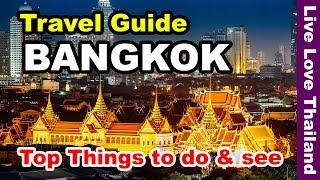Top 10 things to know about Bangkok’s BTS
Description
To get all the latest news and information about Thailand, go to https://thethaiger.com. Like and subscribe to the youtube channel too. You can also LIKE our Facebook page https://facebook.com/thethaigernews to get even more information.
The Bangkok Transit System, better known by locals and tourists as the 'Skytrain' or BTS,
is as ubiquitous in Bangkok as good street food and fake Viagra.
It is operated by Bangkok Mass Transit System, a subsidiary of BTS Group Holdings,
under a concession granted by the Bangkok Metropolitan Administration.
The system consists of 43 stations along two lines.
The Sukhumvit Line running northwards and eastwards, terminating at Mo Chit and Kheha respectively.
And the Silom Line which serves Silom and Sathon Roads,
the central business district of Bangkok, terminating at National Stadium and Bang Wa.
There is also the dedicated Airport Link from the city to Suvarnabhumi Airport
and soon a line will open to Don Mueang Airport.
Besides the BTS, Bangkok's rapid transit system includes the mostly underground Mass Rapid Transit railway lines.
The growth in daily BTS traffic has been huge in the past ten years.
In 2010 there were around 372,000 riders per day.
In 2019 there were around 680,000 riders per day.
The busiest stations are Siam, Asok, Mo Chit and Sala Daeng.
Whilst it's 35 degrees outside in Bangkok, it can often be at least 10 degrees cooler in a BTS carriage.
The air-con is pleasant on some trips, can get icy cold on others.
The Skytrain system was opened on 5 December 1999 by Princess Maha Chakri Sirindhorn.
Bangkokians avoided it like the plague for the first few years but slowly fell in love with the elevated trains.
Now the BTS is a vital part of the Bangkok public transport system with growing numbers of passengers every year.
The BTS has a fleet of 52 four-car trains.





















Comments